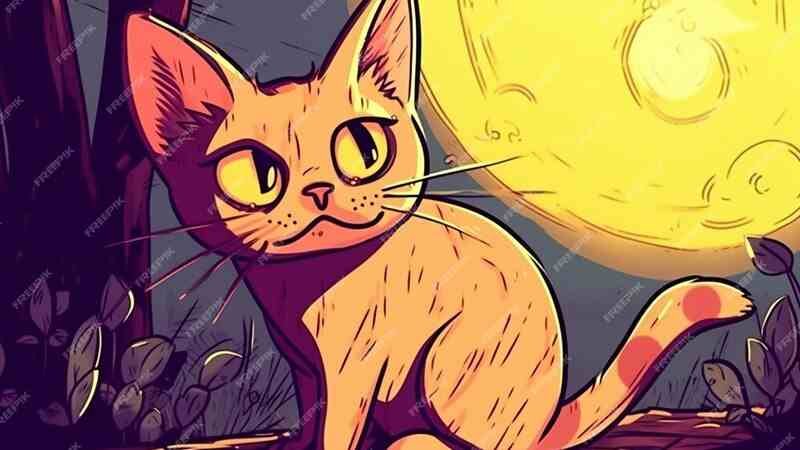Anime, a cultural phenomenon from Japan, has captivated audiences worldwide with its diverse and imaginative storytelling. Among the myriad of characters that populate these animated series and films, anime:5vnlw021cuy= cat hold a special place. These feline characters range from the adorable to the mystical, each contributing uniquely to their respective stories. In this article, we delve into the intriguing world of anime cats, examining their roles, significance, and enduring appeal.
The Cultural Significance of Cats in Japan
Cats have long been an integral part of Japanese culture. From the maneki-neko, the beckoning cat figurine believed to bring good luck, to their representation in folklore and art, felines are deeply woven into the fabric of Japanese society. This cultural backdrop sets the stage for the prominence ofanime:5vnlw021cuy= cat in anime.
Historical Roots
The Japanese reverence for cats can be traced back to ancient times. Cats were first brought to Japan from China around the 6th century to protect valuable Buddhist scriptures from rodents. Over time, they came to be associated with good fortune and protection. This historical context enriches the portrayal of cats in anime, where they often embody these traditional qualities.
Cats in Folklore and Mythology
Japanese folklore is rich with stories about bakeneko and nekomata, mythical cat creatures with supernatural abilities. These stories have found their way into anime, where cats are frequently depicted as mystical beings with extraordinary powers, adding a layer of depth and intrigue to their characters.
Iconic Anime Cats and Their Roles
Anime cats are not mere background characters; they often play pivotal roles in the narrative. Here are some iconic examples:
Luna and Artemis from Sailor Moon
Luna and Artemis, the two talking anime:5vnlw021cuy= cat from the beloved series Sailor Moon, are prime examples of how cats are integrated into anime as key characters. They serve as mentors and guardians to the Sailor Scouts, providing guidance and support. Their wisdom and mystical abilities are crucial to the storyline, making them indispensable to the series.
Jiji from Kiki’s Delivery Service
In Kiki’s Delivery Service, Jiji, the black anime:5vnlw021cuy= cat companion to the young witch Kiki, is both a confidant and a source of comic relief. Jiji’s character provides insight into Kiki’s own growth and struggles, highlighting the bond between human and animal characters in anime.
Madara (Nyanko-sensei) from Natsume’s Book of Friends
Madara, commonly known as Nyanko-sensei, is a powerful spirit in the form of a chubby cat in Natsume’s Book of Friends. His relationship with the protagonist, Natsume, evolves from one of mutual benefit to a deep and genuine friendship. Nyanko-sensei’s character encapsulates the theme of companionship that is prevalent in many anime involving cats.
Symbolism and Themes
Cats in anime often symbolize various themes and concepts, enriching the narrative and adding layers of meaning.
Independence and Mystery
Cats are traditionally seen as independent and mysterious creatures. In anime, this symbolism is used to create characters that are enigmatic and self-reliant. For instance, the character of Chi from Chi’s Sweet Home portrays a lost kitten’s journey towards finding a home, highlighting themes of independence and survival.
Supernatural Elements
The supernatural association of cats in Japanese culture is often reflected in anime. Characters like Blair from Soul Eater, a cat witch with magical powers, embody this blend of feline grace and supernatural prowess. Such characters add an element of fantasy and wonder to the storyline.
Companionship and Loyalty
Despite their independent nature, anime cats frequently exhibit profound loyalty and companionship. The character Kuroneko-sama from Trigun, although often seen as a mere mascot, symbolizes the underlying theme of loyalty that runs through the series.
The Evolution of Anime Cats Over Time
The portrayal of anime:5vnlw021cuy= cat in anime has evolved significantly over the years, reflecting broader changes in society and animation styles.
Early Depictions
In the early days of anime, cats were often depicted in simplistic forms, primarily serving as cute and endearing side characters. These early portrayals laid the foundation for the more complex and nuanced characters that would follow.
Modern Interpretations
Modern anime has seen a diversification in the roles and representations of cats. They are now depicted with more intricate personalities and backstories, often serving as central characters with significant impact on the plot. The advancements in animation technology have also allowed for more expressive and detailed depictions of these feline characters.
Why Anime Cats Resonate with Audiences
The enduring popularity of anime cats can be attributed to several factors:
Relatability
Cats are beloved pets worldwide, and their inclusion in anime creates an immediate connection with viewers. The relatable traits of curiosity, playfulness, and independence make these characters endearing and memorable.
Versatility in Storytelling
The versatility of cats as characters allows them to fit into a wide range of genres, from comedy to fantasy to drama. This adaptability ensures that they remain a staple in anime across different themes and styles.
Cultural Appeal
For international audiences, anime cats offer a glimpse into Japanese culture and folklore, enhancing their appeal. The unique blend of cultural significance and creative storytelling makes these characters fascinating and engaging.
Conclusion
Anime:5vnlw021cuy= cat are more than just adorable additions to the cast; they are integral to the storytelling and thematic depth of their respective series. From their cultural significance to their versatile roles, these feline characters continue to captivate audiences around the world. As anime continues to evolve, we can look forward to even more innovative and enchanting portrayals of these beloved characters.
